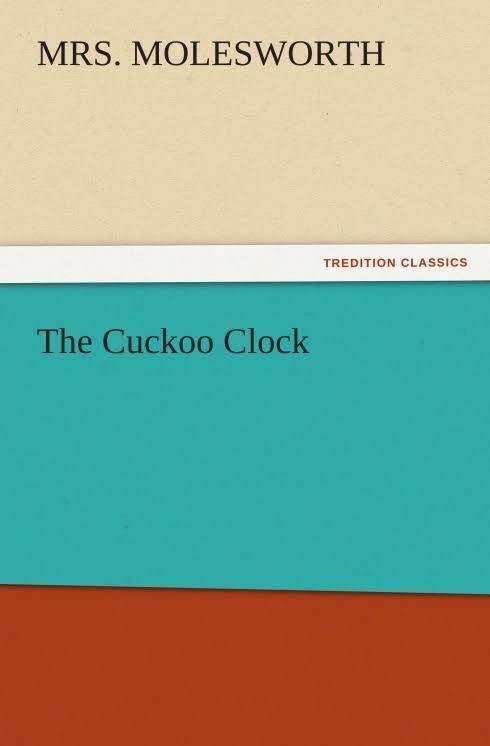7.2 /10 1 Votes7.2
Publication date 1877 Originally published 1877 Page count 242 (first edition) Publisher Macmillan Publishers | 3.6/5 Goodreads Language English Pages 242 (first edition) Genre Children's literature Country United Kingdom | |||||||||||||||||||||||||||||||||
 | ||||||||||||||||||||||||||||||||||
Similar The Tapestry Room, The Carved Lions, The adventures of Herr B, Little Miss Peggy, The children of the castle | ||||||||||||||||||||||||||||||||||
The Cuckoo Clock, by Mary Louisa Molesworth, is a British children's fantasy novel published in 1877. The book was published under her pen name but was then reprinted with her name in 1882. A new edition of The Cuckoo Clock was published in 1914. Original illustrations where done by Walter Crane.
Contents
Plot summary
A small child and a cuckoo for a cuckoo clock become unlikely friends, when at night the clock transports her to magical places.
Genre and style
Her writing style is known to be very plain in context, and it has been criticized for this. But, the plain text was most likely used so that the work was more accessible to children. Nothing she writes is too complicated for the readers, and there is an air of conversation in the text.
Love and friendship
Throughout the novel Griselda struggles with her new place of residence. She quickly finds that what she needs most is friendship. She finds these friends first in the Cuckoo, then her maids, and finally she finds a real friend in Master Phil. It is also realized at the end that throughout the novel her aunts have been showing her examples of real love all along.
Magic in fiction
This particular use of magic is through an enchanted object. The plot is furthered easily with the assumption that the object has no bounds of possibility. Children readers are also lead to use their imagination to see all of the images the writer has concocted.
Sacrifices bring reward
Throughout the story Griselda struggles to finish her lessons during the day. The Cuckoo helps her to learn that with hard work there is eventually a reward. He rewards her greatly when she has improved in her lessons.
19th century children's literature
The second half of the 19th century is called the Golden age of children’s literature, because of the publication of so many notable stories that also appear in modern times. The fantasy novel for children was becoming very popular at this time. The Moral Didactic tale also continued with the popularity of the fantasy story. Often overlapping.
The didactic tale
The character of Griselda, has many interesting qualities. She is seen as a real child, whom throws fits, and is unhappy when she does not get her way. The Cuckoo through these stories teaches young Griselda how to control her feelings and urges. Learning the proper way to act is a major theme in many British childhood books. Many books written in that age were meant for the betterment of the children reading them.
Critical reception
In the back of a copy of Mrs. Molesworth's The Tapestry Room there is a short review for The Cuckoo Clock: "A beautiful little story... It will be read with delight by every child into whose hands it is placed... Ennis Graham deserves all that praise that has been, is, and will be, bestowed on The Cuckoo Clock. Children's stories are plentiful, but one like this not to be met with every day." –Paul Mall Gazette"
